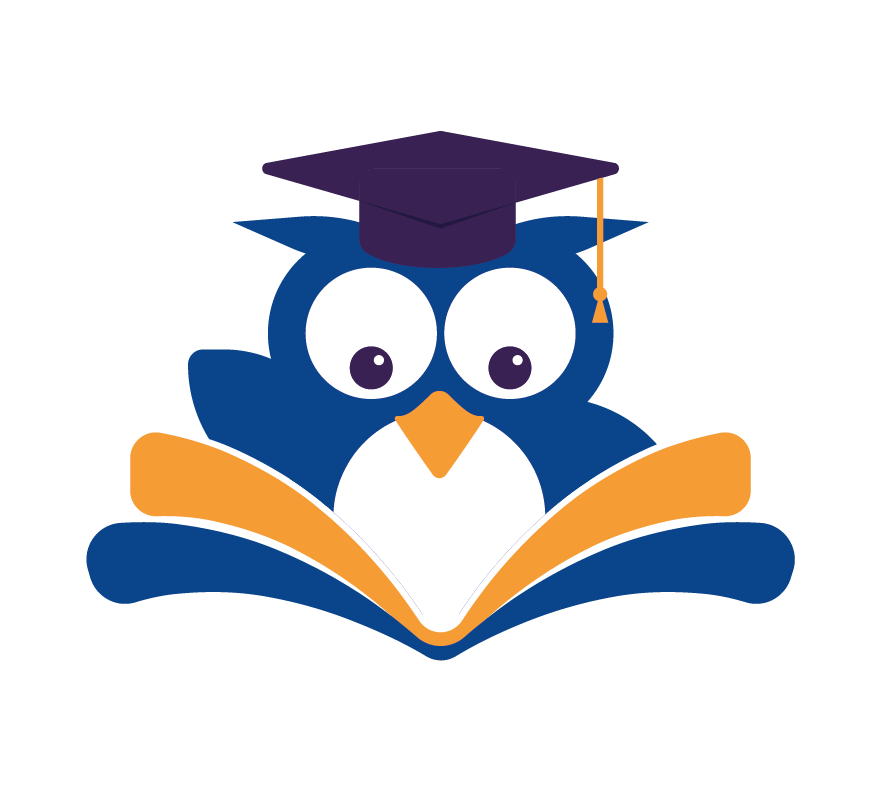In today’s fast world, staying ahead is not just a saying; it’s a must. We think that embracing lifelong learning is the way to reach your best, in life and work.
The world keeps changing, making self-improvement and continuous education more important than ever. By welcoming new challenges, you can stay flexible and succeed in a changing world.
We’re here to help you on this journey. We’ll give you the tools and insights to make learning fun and useful. Our goal is to change how you grow personally and professionally.
Key Takeaways
- Embracing lifelong learning is crucial for personal and professional growth.
- Continuous education helps you stay adaptable in a rapidly changing world.
- Self-improvement is key to unlocking your full potential.
- Practical study methods can make learning more enjoyable and effective.
- Staying motivated is essential for achieving your learning goals.
The Transformative Impact of Continuous Learning
In today’s fast world, learning never stops. It’s not just nice to know new things; it’s a must for growing in life and work.
Why Continuous Education Matters in Today’s World
Learning all the time is key for personal development. It keeps us up-to-date in a changing job scene. It teaches us to think deeply, solve problems, and be creative.
Learning for life boosts our careers and personal growth. It keeps us curious, lets us try new things, and helps us understand the world better.
The Science Behind Learning and Cognitive Health
Studies prove learning keeps our brains sharp. Doing brain-stimulating activities builds a “cognitive reserve.” This can lower the chance of brain decline.
How Regular Learning Prevents Cognitive Decline
Learning regularly makes our brains more flexible. This can improve our thinking and lower dementia risk. People who keep learning tend to stay sharp as they age.
| Cognitive Benefits | Description |
|---|---|
| Neural Plasticity | The brain’s ability to form new neural connections, enhancing cognitive flexibility. |
| Cognitive Reserve | The brain’s ability to adapt and compensate for age-related changes, reducing the risk of cognitive decline. |
| Mental Stimulation | Engaging in activities that challenge the mind, promoting cognitive health. |
By making learning a part of our daily lives, we gain brain benefits. We also move closer to our personal and career dreams.
Embracing the Lifelong Learning Mindset
Welcoming continuous learning is crucial for growth. As we live, learning and adapting shape our success and happiness.
Cultivating a Growth Mindset for Ongoing Development
The growth mindset is at the core of lifelong learning. It believes our skills can grow with effort. This is different from a fixed mindset, where skills are seen as unchangeable.
How do we cultivate this mindset? Start by facing challenges and never giving up. See hard work as a way to master skills. Also, be open to feedback and use it to grow, not as a personal attack.
Identifying and Overcoming Learning Barriers
Many things can stop us from learning. These include our own doubts and external issues like time or resources. Identifying these barriers is the first step to beating them.
Practical Exercises to Challenge Limiting Beliefs
Practical exercises can help overcome our doubts. For instance:
| Exercise | Description | Benefit |
|---|---|---|
| Reflective Journaling | Write down your thoughts and beliefs about your learning abilities. | Helps identify and challenge negative self-talk. |
| Mind Mapping | Create a visual map of your learning goals and the steps to achieve them. | Visualizes the learning process and breaks it down into manageable steps. |
| Self-Questioning | Regularly ask yourself questions about your learning process and beliefs. | Encourages self-reflection and adjustment of learning strategies. |
By doing these exercises, we can start to remove barriers to learning. This helps us become more resilient and adaptable.
Assessing Your Personal Learning Style
The first step in your learning journey is discovering how you absorb information best. Knowing your personal learning style is key to getting the most out of your education. It helps you reach your self-improvement goals.
Identifying Your Primary Learning Preferences
Everyone learns differently. You might be a visual, auditory, or kinesthetic learner. Visual learners do well with images and videos. Auditory learners prefer lectures and audio. Kinesthetic learners learn by doing.
Think about how you’ve learned in the past. Did you take lots of notes or listen to explanations? Maybe you learn best by doing things yourself.
Tailoring Learning Methods to Your Style
Once you know your learning style, you can pick the best methods for you. For example, if you’re a visual learner, use more diagrams. If you’re an auditory learner, try podcasts or audiobooks.
Creating a Customized Learning Framework
Building a learning framework means setting goals and picking the right resources. It’s about making a plan that fits your style and preferences. This plan should be structured but also flexible.
| Learning Style | Preferred Learning Methods | Recommended Resources |
|---|---|---|
| Visual | Diagrams, videos, infographics | YouTube tutorials, visual textbooks |
| Auditory | Lectures, discussions, audio materials | Podcasts, audiobooks, online courses |
| Kinesthetic | Hands-on activities, practical exercises | Laboratory work, project-based learning, simulations |
By understanding and using your learning style, you can make learning more fun and effective. This way, you can improve your skills for life.
Designing Your Lifelong Learning Plan
Starting a lifelong learning journey needs a good plan. This plan should match your goals and dreams. It might seem hard, but with a clear plan, learning can be rewarding.
Setting Achievable and Meaningful Learning Goals
Setting good goals is key to a successful plan. First, think about what you want to achieve through continuous education. Do you want to get better at work, try a new hobby, or change careers? Make sure your goals are clear, reachable, and relevant.
For example, if you want to grow professionally, aim to learn a new programming language in six months. This goal is clear, doable, and ties to your career.
Balancing Breadth and Depth in Knowledge Acquisition
A good lifelong education mixes breadth and depth. Breadth means learning many subjects to connect ideas and spark creativity. Depth means diving deep into one area to become an expert.
Find a balance by spending time on both. For instance, spend one day a week on a new language and two days on a specific skill for your job.
Creating Learning Projects That Sustain Motivation
To keep learning fun, make projects that keep you motivated. These projects should challenge you but still be doable. They should also fit with your learning goals.
- Choose a project that you’re excited about, like writing a book or making art.
- Break the project into smaller tasks to stay focused.
- Set deadlines for each task to stay on track.
Sample Learning Plan Templates
Here are some templates to start your lifelong learning plan:
| Goal | Learning Activities | Timeline |
|---|---|---|
| Learn Python | Online courses, coding practice | 3 months |
| Improve public speaking | Workshops, Toastmasters | 6 months |
By following these tips and using the templates, you can make a lifelong learning plan. This plan will boost your knowledge, skills, and career, making learning rewarding and fulfilling.
Proven Techniques for Effective Lifelong Learning
To get the most out of ongoing learning, using proven strategies is key. These strategies help keep information in your memory longer. As someone who loves to learn, you want to learn as much as you can. Let’s look at some effective ways to help you reach your learning goals.
Implementing Spaced Repetition and Retrieval Practice
Spaced repetition means reviewing material at longer intervals to keep it in your memory. It works best when you actively recall information instead of just reading it again. For example, using flashcards can help with both spaced repetition and retrieval practice.
Studies show that this method can greatly improve how well you remember and recall information. Try adding these techniques to your study routine to see the benefits.
Mastering the Feynman Technique for Deeper Understanding
The Feynman Technique involves teaching a concept as if explaining it for the first time. It helps you find knowledge gaps and simplify complex ideas. To use the Feynman Technique, pick a concept, explain it simply, and find areas where you need more study.
This method not only deepens your understanding but also improves your ability to share complex ideas clearly.
Utilizing Visual Learning Strategies
Visual learning strategies, like making mind maps or diagrams, are very helpful for many people. These tools organize information, show relationships between ideas, and make learning more fun.
Tools for Creating Mind Maps and Knowledge Structures
There are many tools for making mind maps and visual learning structures. Some popular ones are:
- MindMeister
- Coggle
- XMind
These tools help you make maps that are both beautiful and informative, enhancing your learning experience.
| Tool | Features | Platform |
|---|---|---|
| MindMeister | Real-time collaboration, variety of templates | Web-based |
| Coggle | Automatic layout, image support | Web-based |
| XMind | Gantt views, advanced customization | Desktop and mobile |
By using these proven techniques in your lifelong learning, you’ll be better at reaching your learning goals. You’ll keep growing and learning throughout your life.
Leveraging Technology for Self-Directed Education
The digital revolution has changed how we learn. Now, we can easily find educational resources and connect with others. We can also make our learning fit our personal needs.
Essential Digital Platforms for Continuous Learning
Many digital platforms help us keep learning. Sites like Coursera, edX, and Udemy offer courses on many subjects. Khan Academy and Codecademy focus on math, science, and coding.
These sites are easy to use and often free or cheap. This means quality education is available to all. We can learn new things and keep up with the latest in our fields.

Building Personal Learning Networks Online
Creating a personal learning network (PLN) is key. Online communities on LinkedIn, Twitter, and Reddit let us meet experts and peers. Joining forums and discussions gives us insights and keeps us updated.
Our PLN gives us support, feedback, and motivation. These are vital for a successful learning journey.
Finding the Right Balance Between Digital and Traditional Resources
Digital platforms are flexible and accessible. But, we should also use traditional resources like textbooks and workshops. They add depth and context to our learning.
Combining digital and traditional learning makes our education richer. This balanced approach keeps our learning effective and engaging.
Integrating Learning Into Your Daily Life
Learning is key to personal growth. By making it part of your daily life, you turn lifelong learning into a fun and lasting journey. To do this, you need strategies that fit your lifestyle.
Time Management Strategies for Busy Learners
Time management is essential for daily learning. Start by setting aside 15-20 minutes each day for learning. Use your commute, breaks, or any spare time for learning. Prioritizing your tasks and avoiding delay will keep you on track.
Establishing Learning Habits That Become Second Nature
Consistency is crucial for making learning a habit. Create a schedule and stick to it, even if it’s just a few minutes daily. As you keep up, learning will become as natural as brushing your teeth or showering. Use technology to make learning fun and easy with apps or digital tools.
Converting Everyday Experiences Into Learning Opportunities
Learning doesn’t have to be just about books. Turn daily experiences into learning chances. Reflect on your day to see what you can improve. Curiosity is powerful; keep asking questions and seeking answers.
The 5-Minute Learning Habit Method
The 5-Minute Learning Habit Method is a great technique. Spend just 5 minutes a day learning something new. This could be reading a page, watching a short video, or practicing a new skill. The goal is to make learning so quick and easy that you can’t put it off.
Advancing Professional Growth Through Ongoing Learning
The modern workplace needs a focus on ongoing education for growth. As industries change, so do the skills needed to succeed. To keep up, professionals must be ready to learn and adapt always.
Identifying High-Value Skills in Your Industry
To move forward, find the key skills in demand in your field. These skills are crucial for career growth. Look into industry trends, go to conferences, and talk to experts to see what’s needed.
Creating Learning Pathways for Career Advancement
After finding the skills you need, make a plan to get them. This might mean taking online courses, going to workshops, or finding a mentor. A clear plan helps you focus and grow professionally.
Demonstrating Your Learning in Professional Settings
Just getting new skills isn’t enough; you must show them off at work. Share your knowledge, take on new tasks, and show your successes in reviews. This makes you stand out and shows your dedication to learning and growth.

Conclusion: Your Lifelong Learning Journey Starts Now
We’re excited to encourage you to start your lifelong learning journey. Taking this step is a powerful way to improve yourself. We’re here to support you every step of the way.
We’ve talked about the importance of a growth mindset and finding your learning style. We’ve also shown how technology can make learning better. By using these tips, you’ll be on your way to reaching your learning goals.
Your learning path is your own, and it’s time to begin. Whether you want to get better at something, try new things, or advance in your career, we believe in you. Start your lifelong learning journey today and enjoy the journey of continuous learning and self-improvement.

